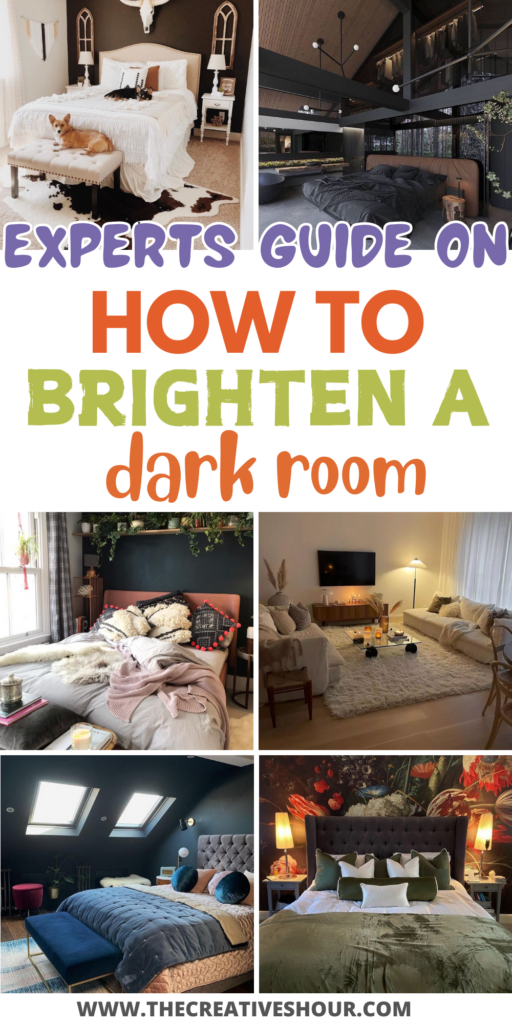
Ever walked into a room that just felt… heavy? Maybe it was the lack of windows, or perhaps the dark, moody paint on the walls that seemed to swallow all the light. Dark rooms can feel like a design challenge, a puzzle that needs solving. It’s easy to think that slapping on some white paint will do the trick, but as I’ve learned (the hard way), it’s not always that simple. I once painted my own dimly lit hallway a crisp white, expecting an instant transformation, only to find that it ended up looking flat and, frankly, a bit sad.
That’s when I realized brightening a dark room requires more than just a color change. It takes strategy, creativity, and sometimes a little professional guidance. To get the real scoop, I reached out to some design experts, and they shared their best tips and color palettes to transform even the gloomiest of spaces.
So, if you’re tired of your dark living room or a windowless hallway that feels more like a cave, this is for you. Whether you’re looking to embrace the shadows or flood the room with natural light, these expert-backed ideas will have you seeing your dark spaces in a whole new light. Ready to get inspired? Let’s dive in!
Color and Design Approaches to Transform Dark Spaces
1. Embrace the Darkness with Moody Colors
“Dark rooms are tricky. Normally, I’d advise white paint and mirrors, but that doesn’t always cut it. Dark hallways with no windows have no aesthetic recourse, so it can be tricky to bring them to life. I’d actually argue for the opposite approach—really lean into it and paint this space in a dark color. Maybe not black, but navy, dark green, dark gray—they can all set a certain mood to the space and make it intentionally gothy. Why fight it, when you can play into the strengths of the space? Why go bright, when you can go moody?” – Rick Berres, Owner, Honey-Doers
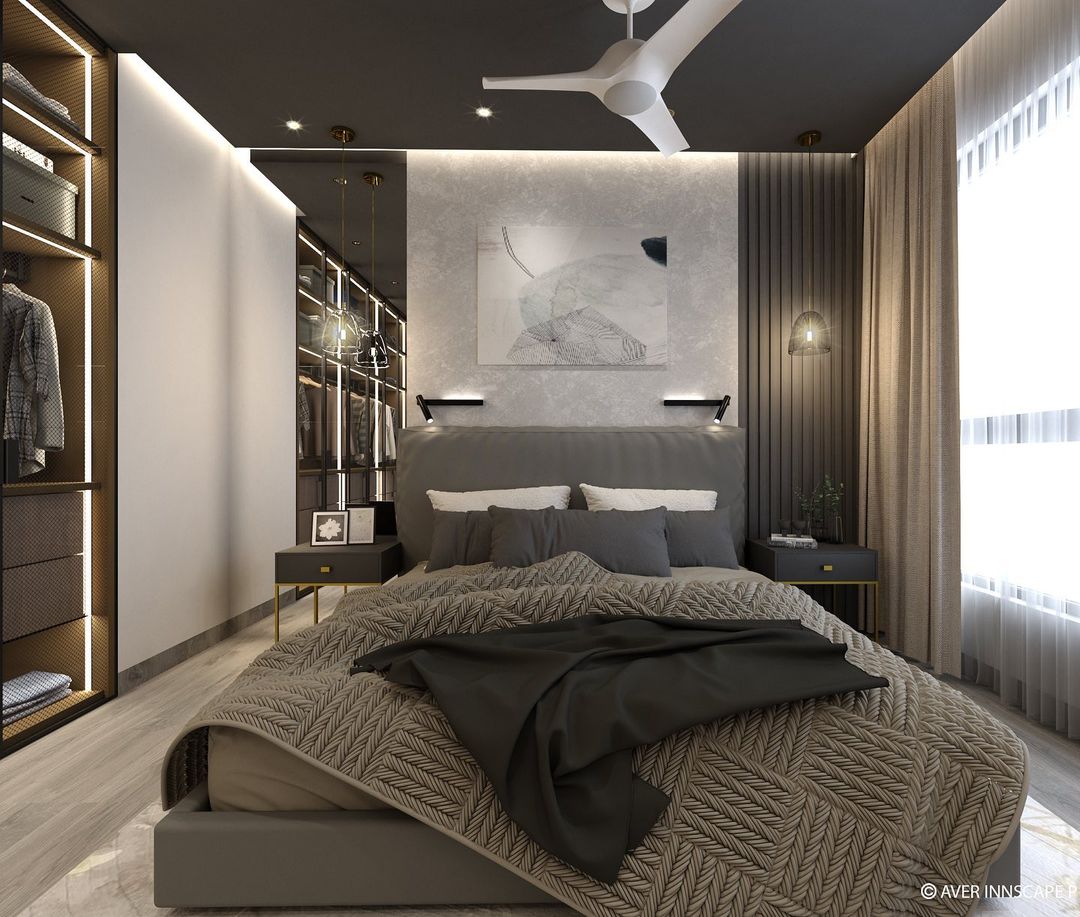
Image by averinnscapedesignstudio
Instead of trying to brighten a dark room, why not make the most of its natural moodiness? Rick’s suggestion of leaning into bold, dark colors like navy, green, or gray can create a stunning, dramatic effect. It might feel counterintuitive at first, but embracing darker tones can give a room character, making it feel intentional rather than awkward.
I saw this done in a small, dim room that had no natural light. Rather than fighting it with pale colors, the owners painted it deep green and added soft lighting. The result was a cozy, inviting space that felt unique, not gloomy. Sometimes, it’s about working with what you have instead of fighting against it.
So, instead of worrying about how to brighten up that tricky space, consider going bold. You might just end up with a room that feels stylish, cozy, and full of personality.
2. Maximize Natural Light with Skylights and Solar Tubes
“As an architect specializing in sustainable design, I’ve found that maximizing natural light is the key to brightening dark spaces. In one beach-house project, we installed skylights, solar tubes, and mirrored panels—the results were stunning. The homeowners were thrilled with how the natural light transformed the once-gloomy interior into an airy, inviting space.
For a similar effect, evaluate how you can bring in more natural light. Skylights and solar tubes are ideal for high ceilings. Mirrors and light-colored walls help reflect and spread the light. Recessed lighting highlights specific areas. With the right lighting strategy, choose a warm, uplifting color palette of creams, beiges, and pale oranges paired with natural wood tones.
In my experience, the combination of strategic lighting and a bright color scheme can transform even the darkest room. Think about where you need more light and ways to reflect it around the space. The results may surprise you. With some thoughtful choices, any naturally dark room can become a bright, enjoyable part of your home.”
Pam Hutter, Principal, Hutter Architects
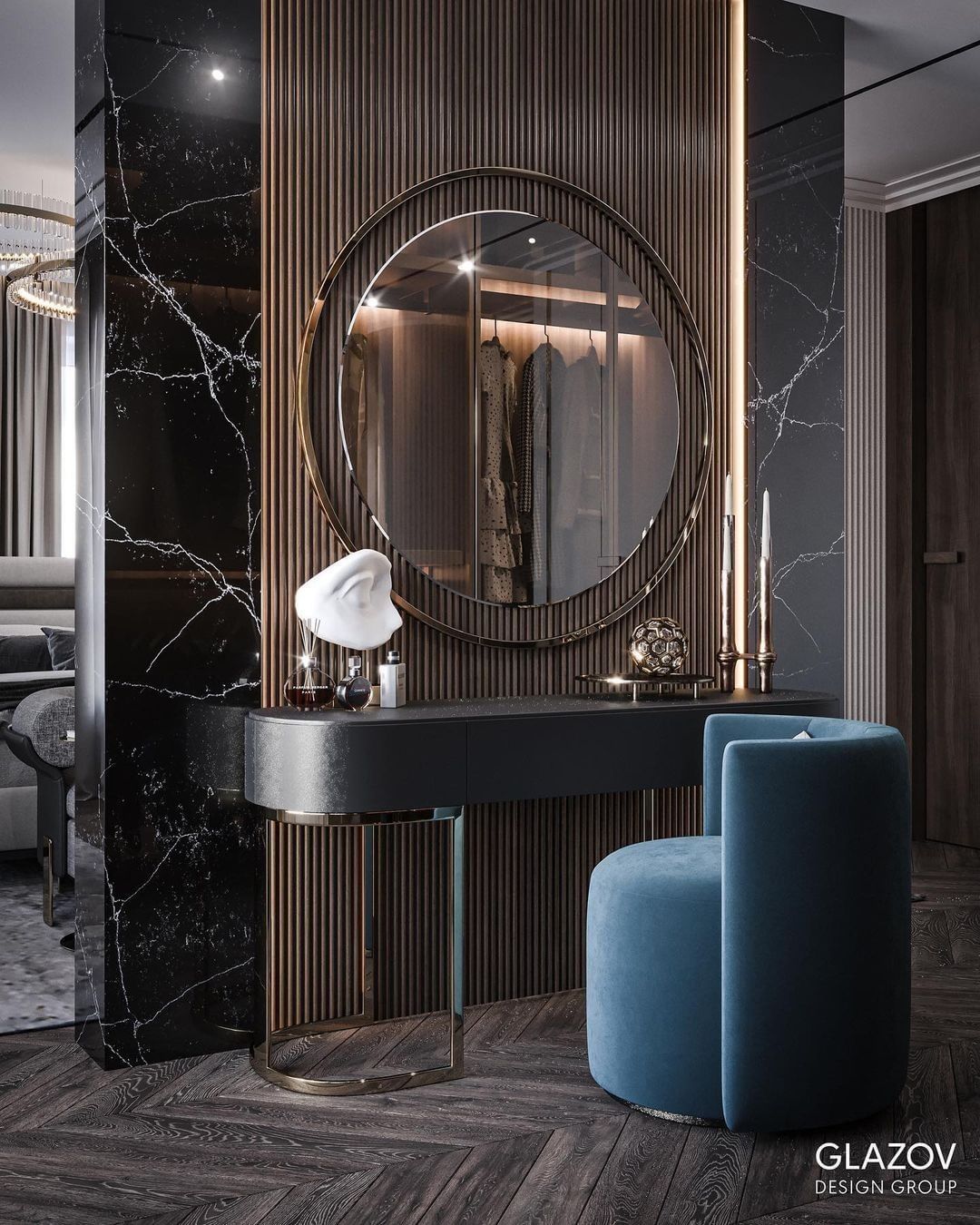
Image by covetedmagazine
Natural light always feels like the perfect solution, doesn’t it? I remember walking into a dim room once, and after a simple adjustment—just adding a few mirrors—the whole place seemed to come to life. Skylights or solar tubes are even better, flooding the room with sunlight in a way that feels effortless. The idea of using natural light to brighten a space resonates with me, especially when I’ve seen firsthand how much of a difference it can make. It’s like watching a gloomy room wake up and stretch its arms.
3. Soft Whites and Pastels to Brighten
“When brightening a naturally dark room, consider a palette dominated by soft whites, light pastels, and warm neutrals. I’ve seen spaces transformed by using shades like pale yellow or soft mint on walls, complemented by brighter accents in decor—think cushions or artwork. Reflective surfaces, such as mirrors and glossy finishes, amplify light, creating a sense of openness.
During one project, I painted a small, dimly lit office in warm cream and added strategically placed mirrors. It felt airy and inviting, which significantly improved the workspace’s atmosphere. For homeowners embarking on this journey, I recommend testing paint swatches in different lighting throughout the day to ensure the chosen colors achieve the desired effect. Small, thoughtful changes can make a world of difference in how a room feels”. – Hayim Grant, Founder and President, Corporate Suites
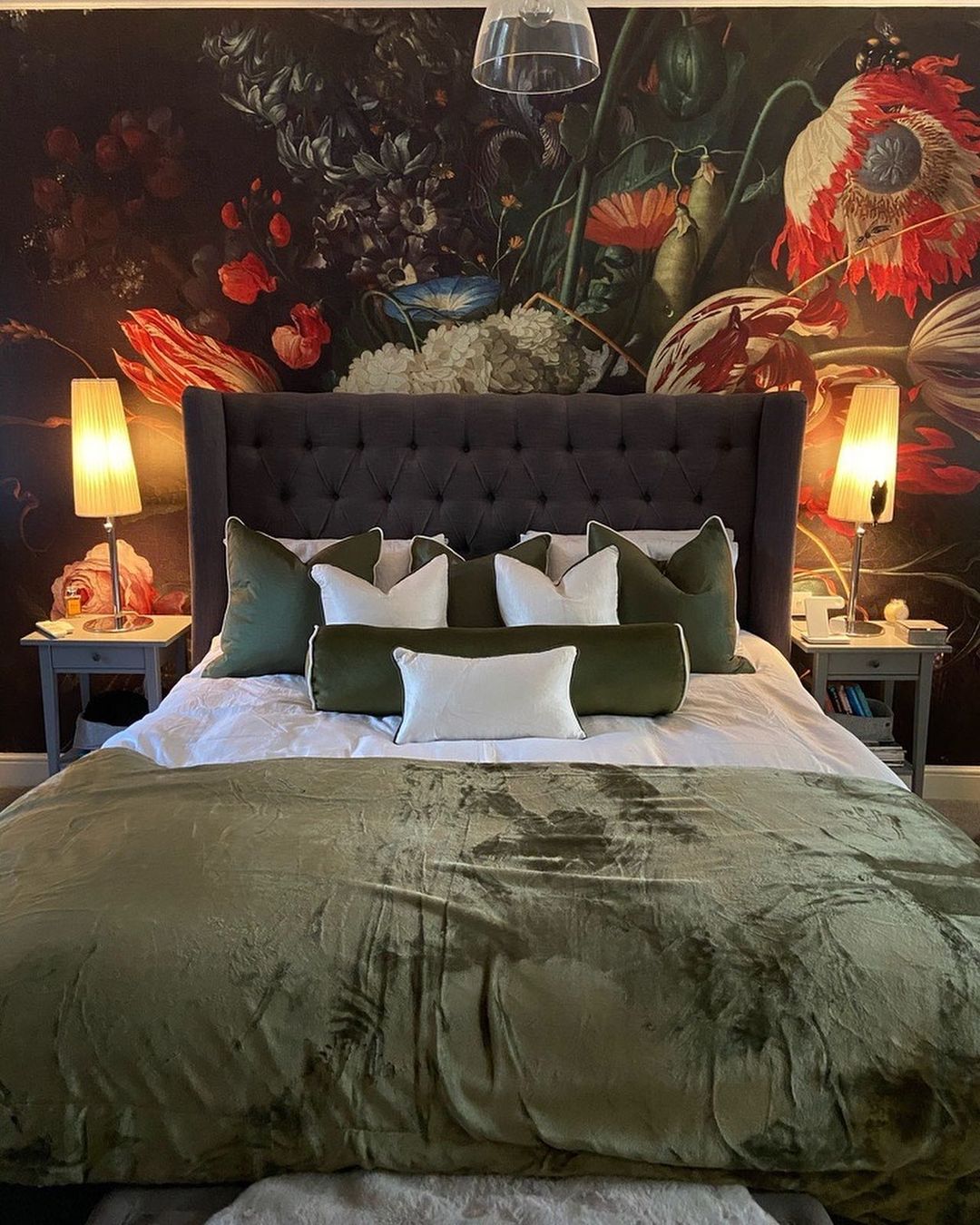
Image by hoviaofficial
There’s something soothing about soft whites and pastels in a room that lacks light. I’ve experimented with these shades myself and found that they create a gentle glow, making even the darkest corners feel more open. A pale mint or soft yellow can instantly lift a space, adding brightness without feeling harsh. And when paired with reflective surfaces, it’s like doubling the effect—soft, airy, and full of light.
4. Choose Warm Undertones for Paint Colors
“When you’re working with a naturally dark room, choosing the right paint color can make all the difference, and it’s not just about going straight for white. Sure, lighter colors help reflect light, but if the space lacks natural lighting, plain white can often end up looking flat or even a bit gloomy. Instead, the trick is to go for softer shades with a hint of warmth or just enough saturation to bring some life into the room.
A color I often recommend in these cases is something like a soft off-white with a subtle beige undertone. It’s still light enough to open up the space, but the warm undertone stops it from feeling too sterile or cold. Another great option is a muted, creamy neutral that adds depth without making the room feel heavy. These kinds of colors work especially well because they reflect light without washing out the space, and they play nicely with both warm and cool lighting.
One thing to keep in mind: don’t go too light. You might be tempted to pick the brightest shade you can find, but in darker rooms, that can actually backfire. Aim for something with a light reflectance value (LRV) of around 80 or less. Anything brighter can end up looking washed out, especially if there’s limited natural light. Warmer tones—like soft beige or creamy shades—are generally easier to work with because they create a cozy, inviting vibe, no matter what kind of lighting you have.
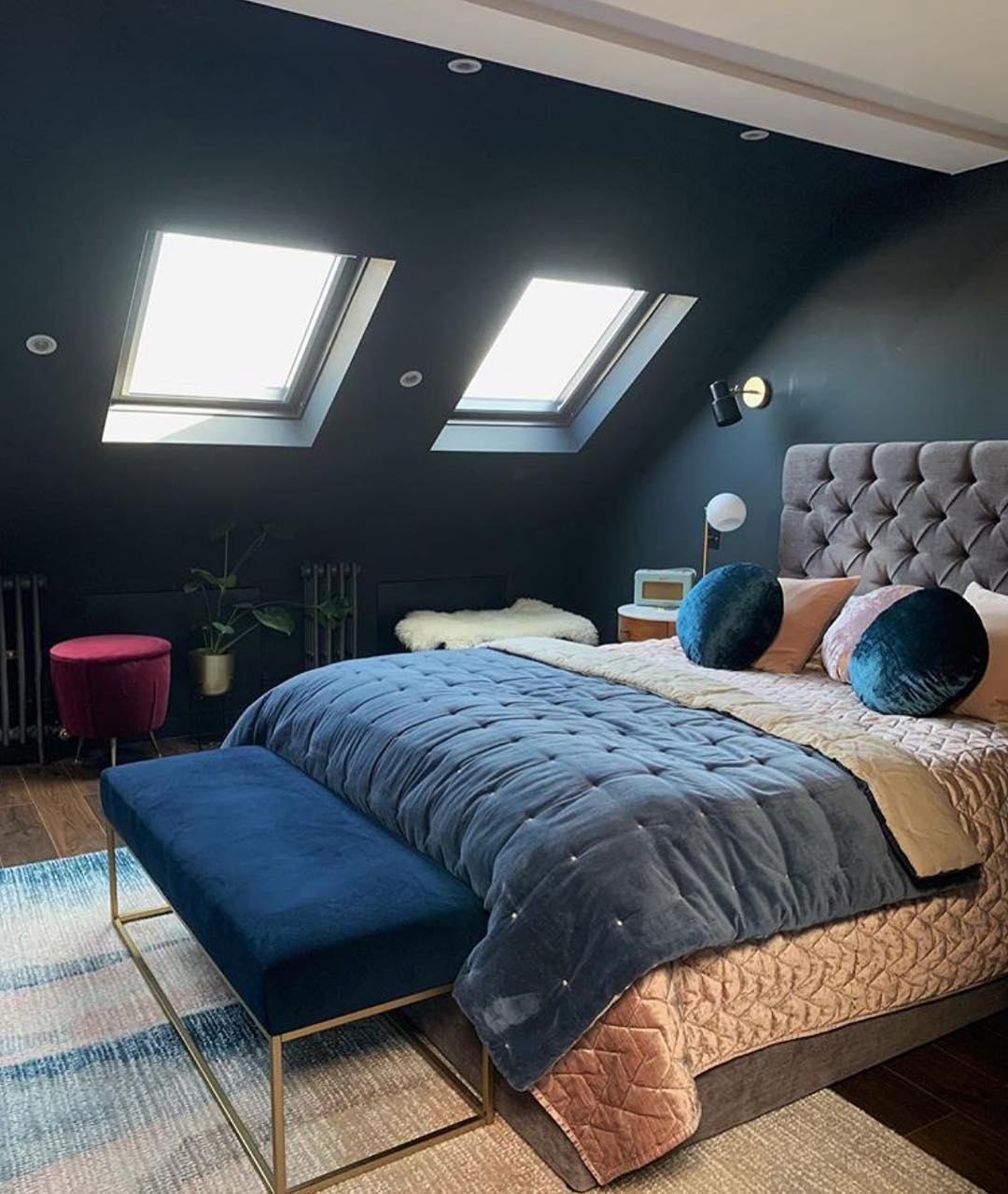
Image by houseandhomemagazine
Beyond paint, think about the other elements in the room. If you can lighten up your furniture, curtains, or rugs, you’ll reflect more light overall, helping to brighten the space. Light-colored slipcovers or a bright area rug can work wonders. But, if you want to go bold with a darker wall color, balance it with lighter accents—natural wood, soft fabrics, maybe even some greenery—to keep the space feeling lively and balanced.
One last tip: consider using an eggshell finish instead of matte for the walls. Eggshell has just a bit of sheen, so it reflects more light, making the room feel more dynamic and alive. It also gives your walls a bit more texture, which helps the space feel less flat and more visually interesting.” – Jeremy Morgan, Brand President, Groovy Hues Painting
I’ve had the experience of painting a room white, thinking it would brighten things up, only to feel like the room fell flat. Jeremy’s advice about warm undertones really clicks with me. Those subtle beige or creamy shades can bring light and warmth into a dark room without making it feel sterile. It’s the kind of tip you don’t realize until you see it in action—adding just a touch of warmth makes all the difference in how inviting the room feels.
5. Sheer Curtains for More Natural Light
“When it comes to brightening a naturally dark room, choosing the right curtains can make all the difference. It’s about inviting light in while still maintaining a sense of style and privacy.
We’ve found that sheer or semi-sheer curtains in light, airy colors like white, cream, or soft pastels work wonders in brightening up a space. They allow natural light to filter through while gently diffusing it, creating a warm and inviting ambiance.
For example, we recently transformed a dimly lit living room with floor-to-ceiling sheer white curtains. The room instantly felt brighter and more spacious, even on cloudy days. The soft fabric added a touch of elegance, while still allowing glimpses of the outside world.
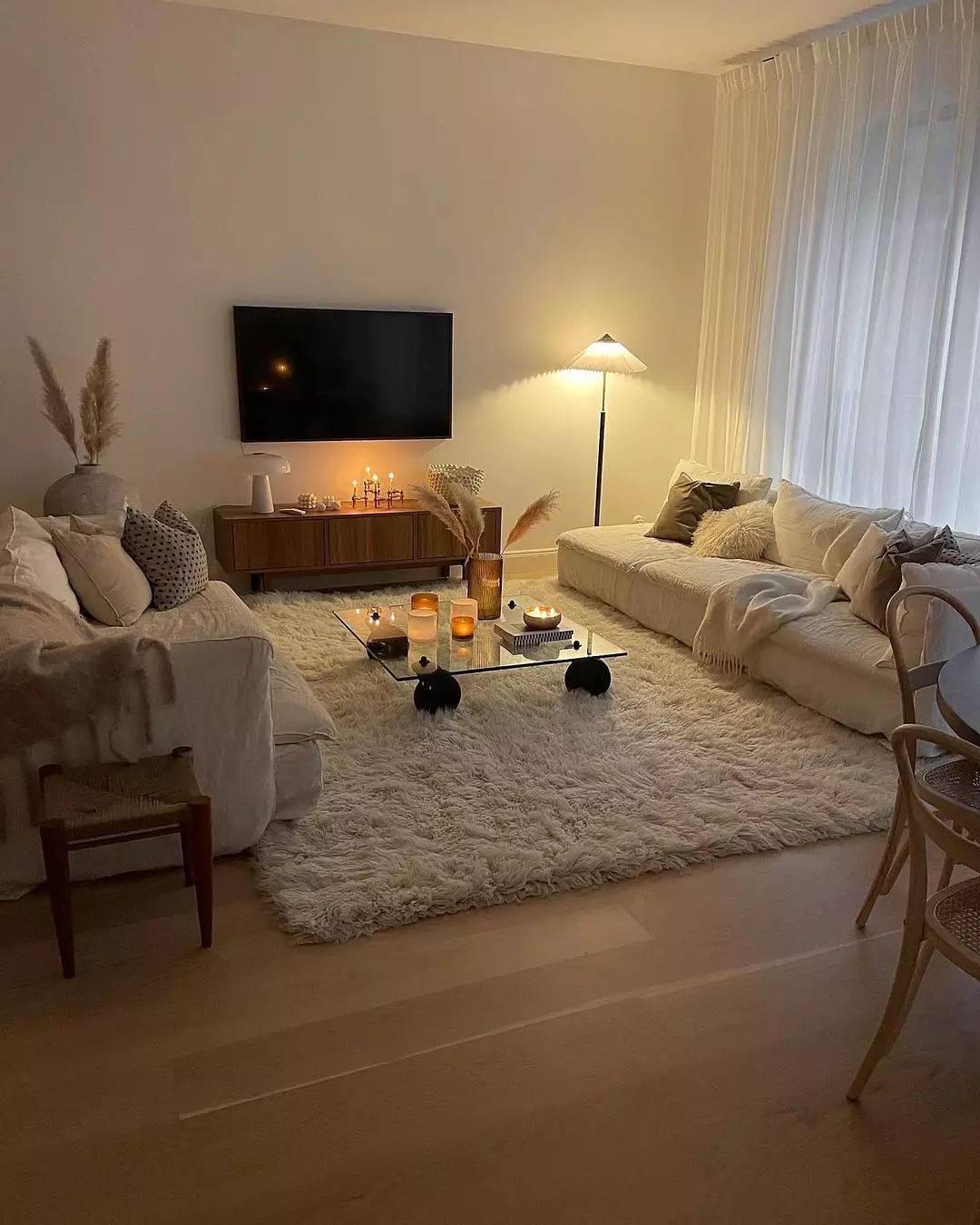
Image by bohogeekz
Here are some tips for homeowners looking to achieve a similar effect:
- Embrace natural light: Choose curtains that allow maximum light transmission.
- Opt for light colors: White, cream, and pastels reflect light, creating a brighter atmosphere.
- Consider sheer or semi-sheer fabrics: These allow natural light to filter through while maintaining privacy.
- Hang curtains high and wide: This creates the illusion of taller ceilings and a larger space.
- Layer with heavier curtains: For added privacy and light control, layer sheer curtains with heavier drapes in a complementary color.
Remember, curtains are more than just window coverings. They’re a powerful tool for transforming the ambiance of a room. By choosing the right color palette and design approach, you can turn even the darkest space into a bright and welcoming sanctuary.” – Charles Chakkalo, Owner, Joey’z Shopping
I’ve always loved the effect of sheer curtains in a space that needs light. When I swapped heavy drapes for light, airy curtains in one of my rooms, it completely transformed the feel. The natural light filtered through softly, giving the room a bright yet cozy ambiance. It’s amazing how something as simple as changing the curtains can have such an impact. Sheer fabrics in white or cream let in just enough light without feeling too exposed.
6. Create a Moody Parlor with Dark Tones
“I like to embrace the darkness instead of trying to overcome it. On a railroad-style, full-floor brownstone design project a few years ago, in the middle section with very little natural light, I created a black envelope with one dramatic mural wall. Rich, textured velvet fabrics complemented the moody parlor vibe, and the low lighting worked to the advantage of this roomscape.” – Veronica London, Interior Designer, Veronica London LLC
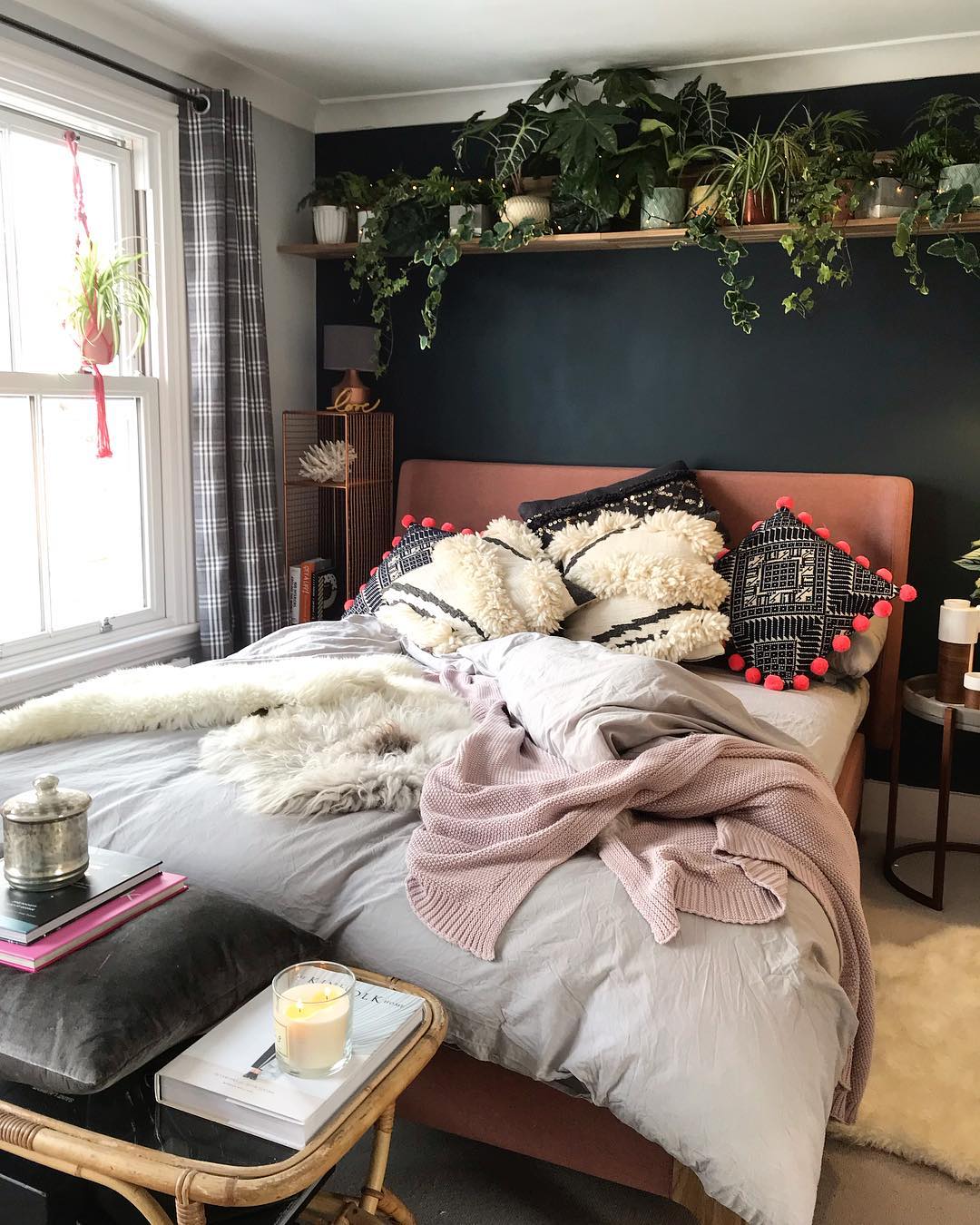
Image by house_with_hannah
This approach feels daring but so satisfying. Going dark can seem counterintuitive when you’re trying to brighten a room, but I’ve seen spaces transformed by embracing rich, moody colors. It turns what could feel like a flaw into a design feature. Deep tones like black or dark green create a cozy, luxurious atmosphere. It’s as if the room becomes a retreat, pulling you into its charm and comfort. Sometimes, going bold with darker tones feels less like hiding the problem and more like elevating the space.
7. Combine Lighting Types for Maximum Brightness
“Lighting is the key to brightening a naturally dark room. Create a bright, modern space to be enjoyed by using a variety of upper and lower lighting that includes high-wattage lamps, overhead statement lighting such as a beautiful chandelier, recessed lights, accent lighting such as interesting wall sconces, and even candles to create a cozy, well-lit room.
Bring in mirrors to brighten a dark room by placing them near any windows and lamps, to reflect and bounce more light. Keep the room uncluttered so light can move around the room, and choose neutral, warm, or pastel paint colors to reflect even more light.
Lastly, consider lighter or colorful flooring to brighten things up even more! All these tips will bring in more shine and light to create the perfect well-lit room.” – Christina Kittelstad, CEO, Spiral Design Color Consulting
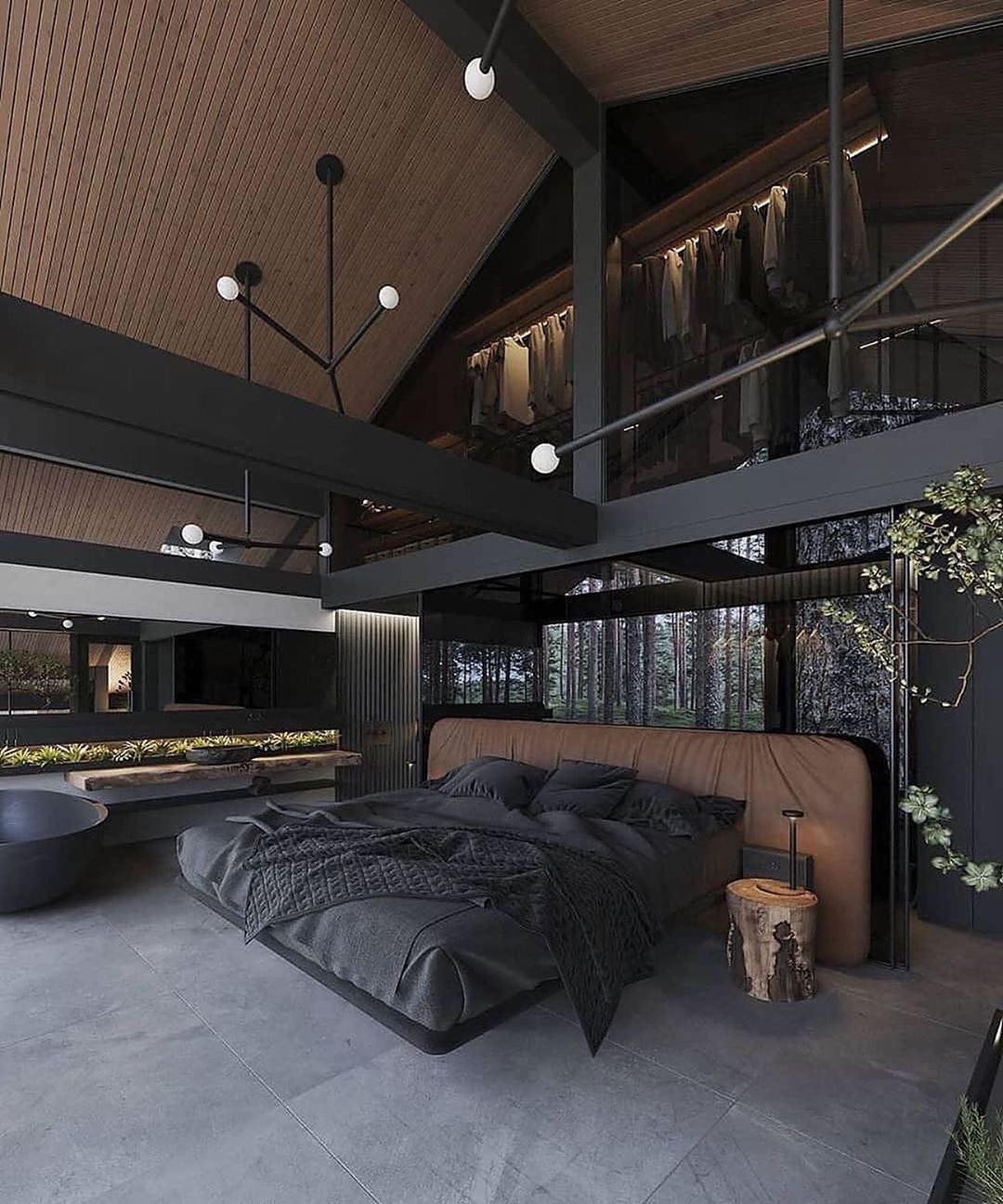
Image by pureluxury.lifestyle
I’ve learned over time that one single light source never quite does the trick. Combining different types of lighting—floor lamps, recessed lights, and even candles—creates a much more welcoming and bright atmosphere. I’ve done this myself, adding layered lighting to a dark room, and it immediately felt more balanced and lively. It’s like giving the room multiple chances to shine.
8. Neutral Palette and Reflective Surfaces
“Creating light and bright interiors in homes for living, and especially in home staging, is key to creating an inviting and comforting environment. Wall paint, flooring, and window treatments play a role in setting the foundation for the room, so choosing a light neutral palette is the first step in elevating the room’s light factor. Something as simple as painting the ceilings High Reflective White (SW 7757) and the walls Shoji White (SW 7042) will lighten a room significantly.
Removing any heavy window treatments and using adjustable light-diffusing shades, or light Roman shades for added texture, opens the room for natural light to stream in and highlight things like green plants, art, accessories, and soft goods located throughout the room. Placing light-colored throw pillows and throws on the furnishings, along with a light-colored area rug on the floor, will lighten dark, heavy pieces.
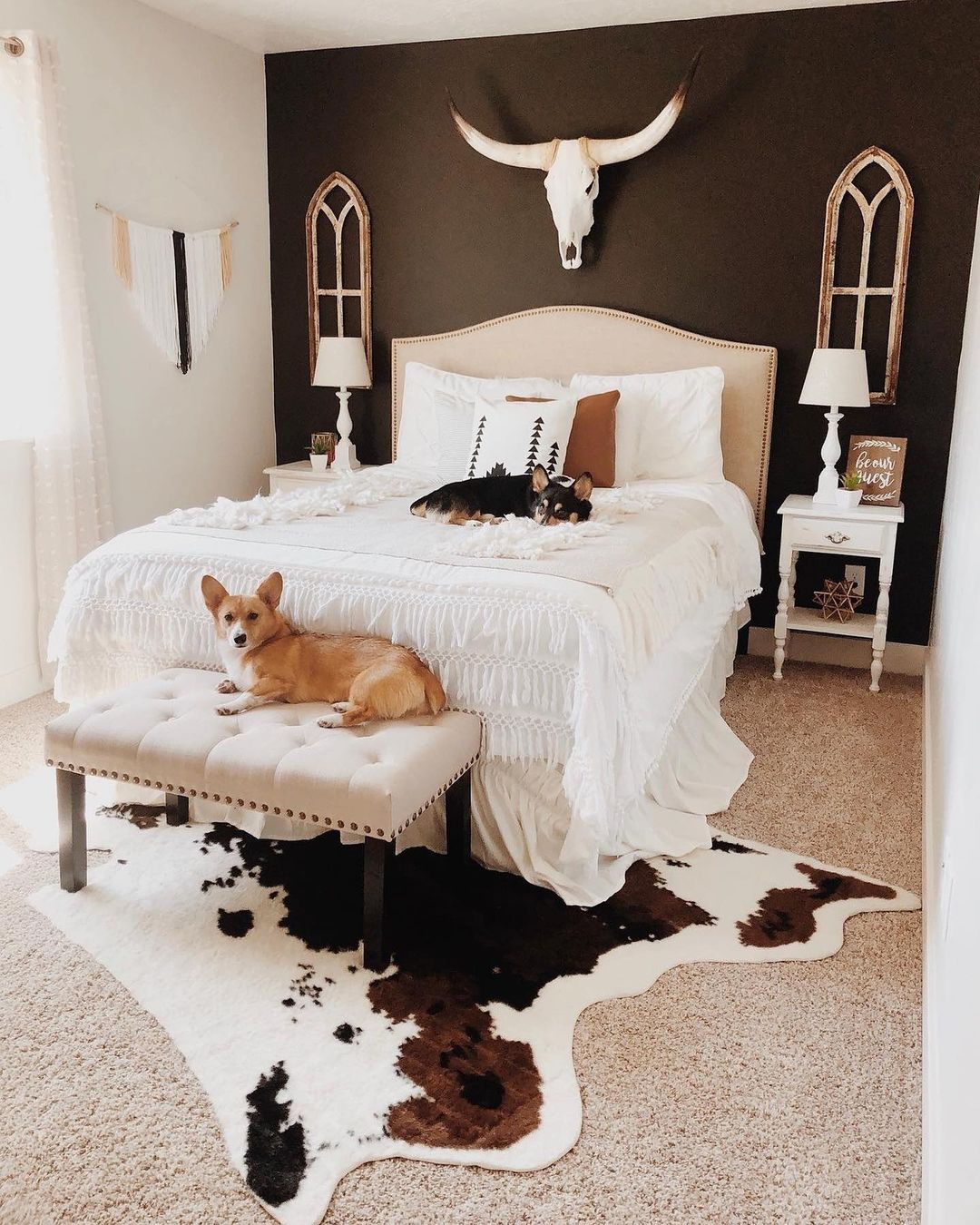
Image by antiquefarmhouse
Using uplighting in corners, situated behind furnishings or plants, along with, perhaps, a glass coffee table accented with a beautiful coffee table book, a bright floral in an interesting vase, for a pop of color, and other accessories of different types, will add interest and coordinate with the light neutral palette.
Wall art is the final touch, and using light pieces of varying types, such as canvas, framed, and dimensional, will play nicely with the final focal point of the room: a gorgeous mirror which will reflect light, as well as the beautifully coordinated and arranged room.” – Janice Brittain, Owner, Just Beautiful Interiors LLC
I’m always amazed at how much difference a neutral palette can make in a dark room. Light-colored walls and floors create a clean, open feel, while reflective surfaces like mirrors or glass help bounce light around. I’ve seen it in action and can say it’s a foolproof way to brighten up a space. The combination of neutrals and reflective finishes transforms a room into something airy and inviting.
9. Amplify Light with White Ceilings
“When it comes to brightening a naturally dark room, I often recommend starting with a lighter color palette to reflect and maximize the available light. Soft, warm whites and light neutrals are incredibly effective, as they create a sense of openness without feeling sterile. One of the most impactful strategies is using a white ceiling—this simple change helps a space breathe, making it feel taller and more expansive. Paired with light-colored walls and strategically placed mirrors, you can amplify natural light and brighten the entire room.
In a recent project, we transformed a dark living-style space using these techniques. We opted for a soft, creamy white on the ceiling—Sherwin-Williams Pure White—and light neutral walls with a subtle hint of warmth by using Sherwin-Williams Gossamer Veil. To add depth and interest, we incorporated lighter wood tones for furniture and flooring, which softened the overall look and brought a touch of coziness.
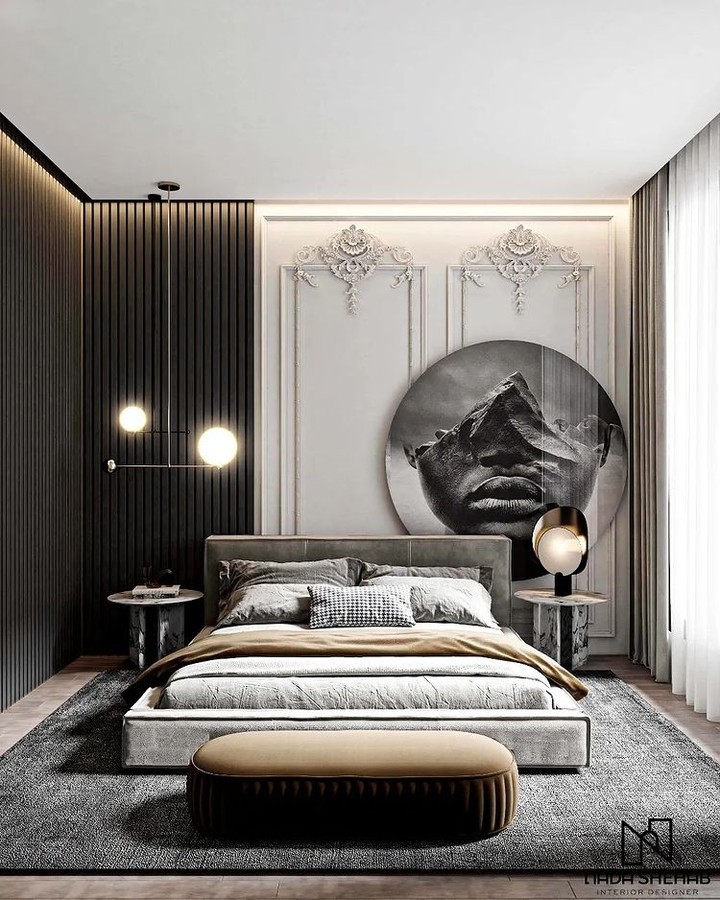
Image by insplosion
For homeowners looking to achieve a similar effect, my advice is to focus on reflective surfaces and lighter finishes. Additionally, consider layering lighting—overhead, task, and accent lighting work together to create a well-lit, welcoming environment. When done thoughtfully, even the darkest rooms can become bright, inviting spaces that feel airy and alive.” – Katie Decker-Erickson, Exterior & Interior Commercial Designer | IACC Certified Architectural Color Consultant | Interior Design Business Coach | Podcast Host | Public Speaker | Industry Expert
The impact of a white ceiling can’t be overstated. I’ve used this trick, and it’s one of the easiest ways to make a room feel bigger and brighter. Paired with light-colored walls, a white ceiling reflects the light upward, creating an open, airy feel. It’s a simple change, but it makes a huge difference in how a room looks and feels, especially in dark or low-ceilinged spaces.
10. Warm Undertones in Paint for Low-Light Rooms
“If a client is looking to paint an already dark space (because of low artificial or natural light sources), they often think that a bright white paint is their only option. Since white absorbs light and reflects the colors around it, a bright white will often appear dingy and drab—because there is very little light to reflect. Instead, I will suggest they consider a very light color with warm undertones.
As a rule of thumb, I recommend choosing a color with an LRV (Light Reflective Value) of 65-85 (on a scale of 1-100, with 100 being the brightest of whites). A hint of warmth to a light color can lighten the space and make it more appealing. I might also suggest putting the same paint color on the walls AND the ceiling, allowing for a more cohesive and streamlined look, as this can make the space appear bigger and therefore brighter.” – Kathy Stracke, Owner/Designer, Five Star Painting
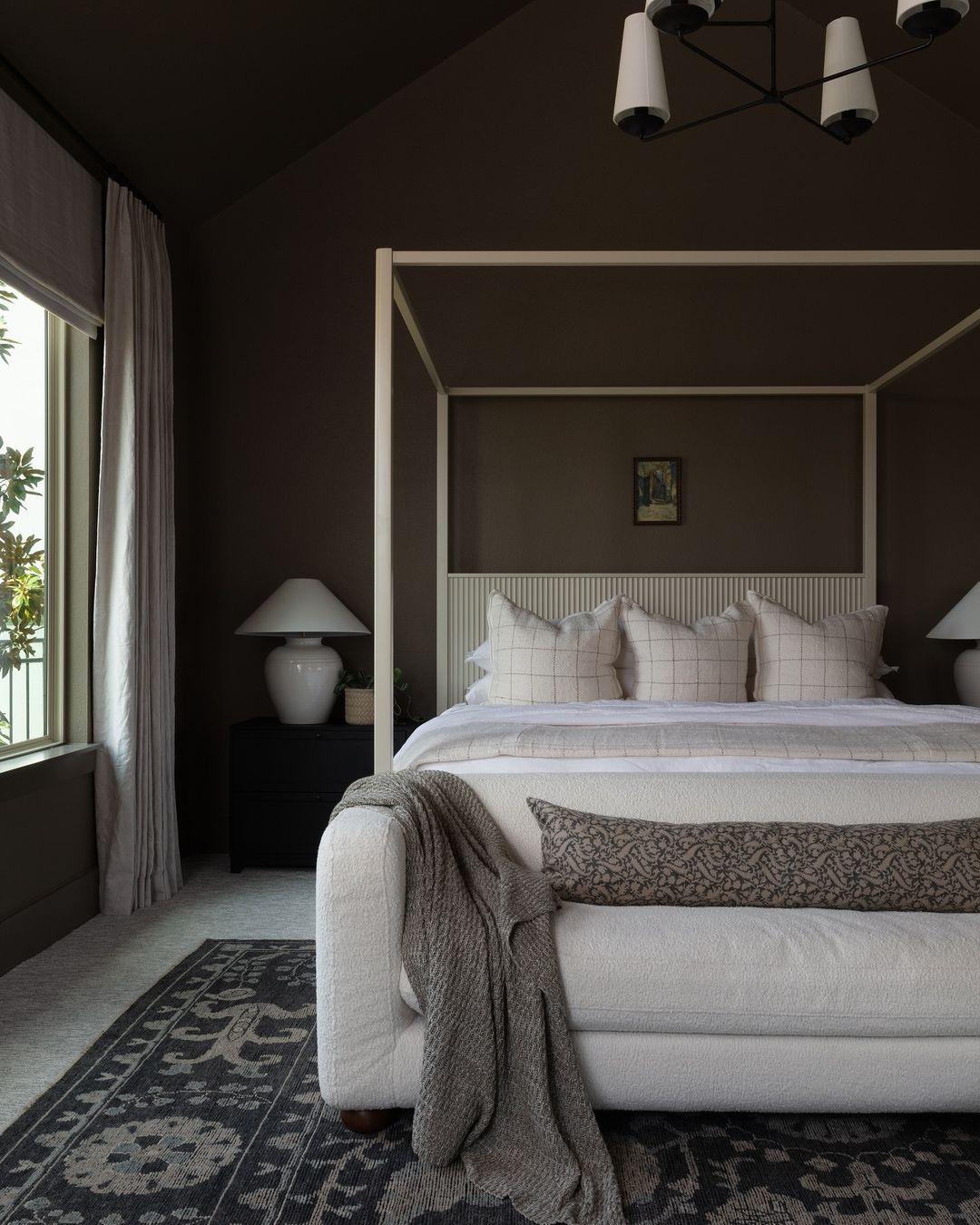
Image by visualcomfort
Using warm undertones in a dark room has been a game-changer for me. Bright white can sometimes feel too harsh or flat, especially when there’s little light to reflect. Warm undertones, like soft beiges or light creams, bring a sense of coziness to the space while still keeping it light. It’s like creating a glow in a room that otherwise might feel a bit stark.
11. Brighten with Light-Colored Flooring
“When it comes to brightening a naturally dark room, choosing the right flooring can make a world of difference. Light-colored options like white oak, bleached wood, or light gray tones tend to reflect more light, creating an airy, open feel. These colors work particularly well when paired with matte or satin finishes, which help diffuse light evenly across the space. I’ve seen rooms transform with this approach—what once felt dim and cramped suddenly becomes welcoming and full of energy.
For homeowners looking to achieve this effect, I’d recommend focusing on light, neutral tones for the floors, walls, and furnishings. You can also introduce reflective surfaces like mirrors or glass to enhance the brightness without needing any structural changes.” – Dan Grigin, Founder & General Manager, Elephant Floors
Light-colored flooring is one of those tricks that can instantly brighten a room. I’ve seen firsthand how choosing something like white oak or bleached wood opens up a space, making it feel more spacious and airy. It’s not just about the walls—light floors can reflect whatever light is available, amplifying the brightness throughout the entire room. It’s an easy way to add a fresh, uplifting vibe without doing a complete overhaul.
Conclusion
Brightening a dark room doesn’t have to be a daunting task. From embracing moody colors to adding soft whites and pastels, the right color palette can completely change the atmosphere of your space. Lighting plays a crucial role too—whether it’s layering different types of lights, installing skylights, or strategically placing mirrors, there are plenty of ways to maximize the light in a room. Add in design elements like sheer curtains or reflective surfaces, and even the darkest room can feel open, inviting, and full of life.
The beauty of these expert-approved approaches is that they offer a variety of solutions depending on your style and the room’s needs. Whether you’re leaning into the darkness with bold, dramatic tones or using lighter neutrals to amplify brightness, there’s something here for every space. Don’t be afraid to experiment—small changes can lead to big transformations. With the right choices, your dark room can become one of your home’s brightest features.
